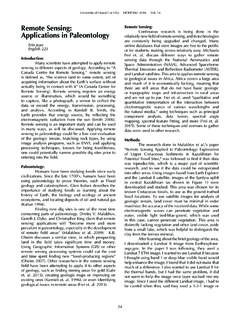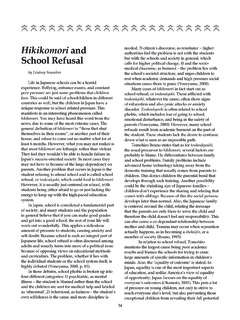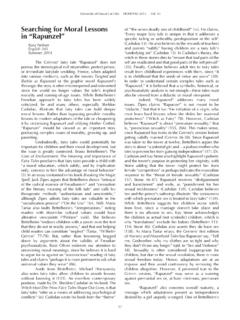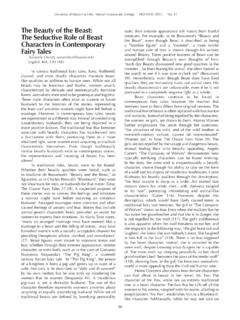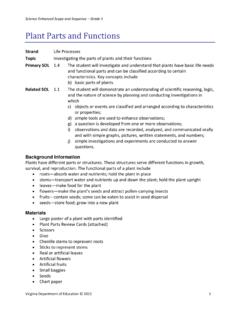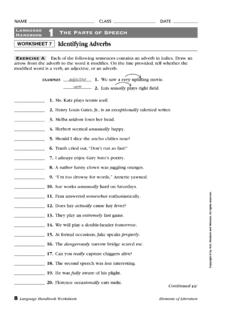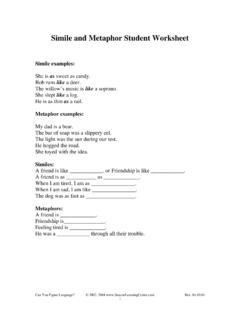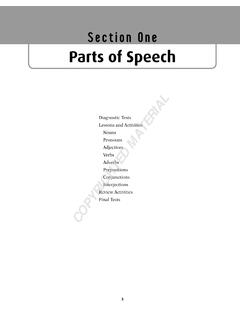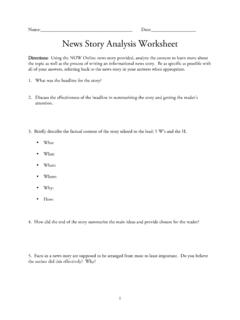Transcription of Plant and animal cells 1.1 - University of Hawaiʻi at Hilo
1 Partnerships for Reform through Investigative Science and Math plants and animal cells 1 Concepts Scientific method Difference between plants and animals cells HCPS III Benchmarks SC SC Duration 2 hours Source Material PRISM Vocabulary Cell Cell Membrane Cytosol Endoplasmic reticulum Golgi apparatus Lysosomes Mitochondria Zooxanthellae Plant and animal cells Summary Students will begin the unit by finding out what the differences are between Plant and animal cells .
2 They will learn that coral is an animal . Objectives Students will learn that coral is an animal . Students will learn the differences between Plant and animal cells . Materials part 1: Coral fragments or pictures of a reef Microscopes Magnifying glasses Plant slide (onion skin) animal slide (cheek scraping or if access a polyp) Overhead projector animal and Plant cells Worksheets (1 per student) Cell Parts worksheet ( 1 per student) Transparency of Plant , animal , and Coral Cell examples Transparency of Coral Cell with Zooxanthellae part 2.
3 Index cards for each organelle (card will include name, script and instructions for the play) Large nametags with organelle name for around the student s neck Cardboard boxes Large index cards with Energy , Sugar and Protein 6 x 9 piece of white paper (1 per student) Making Connections By learning the differences between Plant and animal cells students will begin to explore and understand the ways in which Plant and animals are different. They will recall these differences at various times throughout the remainder of the unit.
4 Teacher Prep for Activity part 1: Photocopy, both animal and Plant Cell Worksheets, Cell Parts and make a transparencies of each cell sample picture and the Coral Cell with Zooxanthellae (Cover the instructions on this page). Gather your coral fragments and familiarize yourself with your coral. Have magnifying glasses or a digital microscope nearby CORAL REEF ECOLOGY Partnerships for Reform through Investigative Science and Math plants and animal cells 2 so you can look closely at the calyx (the calyx is where the actual polyp lives).
5 If you have pre-made slides of Plant and animal cells , have them ready near your microscopes. If you need to make your own slides, place a very thin slice of an onion on a clean microscope slide and put a drop of iodine on it (iodine can be purchased at most drug stores), and slide the cell cover over the iodine and onion slice. To make an animal cell, scrape the lining of your inner cheek with a toothpick and smear the cells on a microscope slide. Place a drop of water on your cheek cells and slip the slide cover on the water and cheek cells .
6 A sample picture of each a Plant , animal and coral cell slide has been provided at the bottom of this lesson plan. part 2: Print the scripts for animal and Plant cells . Cut out each cell part and paste it on a small note card. Write each cell part name on large note cards and punch two holes on either corner. Tie off yarn or string to create a necklace for nametags. Create an open space in your classroom for where the play will take place. Background Only living things have cells . Plant cells can be distinguished from animal cells by three characteristics.
7 First, Plant cells are bounded by a cell membrane and a rigid cell wall, whereas animal cells have only a cell membrane to protect their insides from the outside environment. Second, Plant cells have mitochondria and chloroplasts (an organelle that uses photosynthesis) to produce energy, while animal cells only have mitochondria. Finally, Plant cells contain vacuoles-storage units-which are absent in many animal cells . The similarities between Plant and animal cells are that they are both eukaryotic cells ( cells that contain a nucleus).
8 They share many kinds of cell parts (or organelles) such as the nucleus, mitochondria, endoplasmic reticulum, golgi apparatus, lysosomes, cytosol and cell membrane. Coral polyps are living animals. Some corals have a symbiotic relationship with Plant cells (zooxanthellae). These types of corals are typically found in areas close to the surface of water so that the zooxanthellae can use photosynthesis to create energy. Because zooxanthellae uses less than 5% of the energy it produces while the rest goes to the corals, corals containing zooxanthellae are usually the reef-building types of corals.
9 You can read more information on coral cells here: Procedure part 1: 1. Show the students a variety of coral skeletons and pictures. Ask the class what they think it is: a Plant , animal , rock, etc. Ask inquiry types of questions: 1. What observations can they make? 2. If the organism is an animal , why? 3. What is the difference between plants and animals? Make a list of all of the differences suggested by students. What purposes do these differences serve? How are plants and animals similar?
10 Which one do you think is more Partnerships for Reform through Investigative Science and Math plants and animal cells 3 complex? Have students use microscopes to observe the shapes of Plant and animal cells . Optional: Have students draw a diagram of what they see under the microscope. Ask students: Why do you think the Plant cell looks rectangular in shape? What other differences do you see between the two cells ? 2. Hand out the animal and Plant cells Worksheets and the Cell Parts worksheet .
